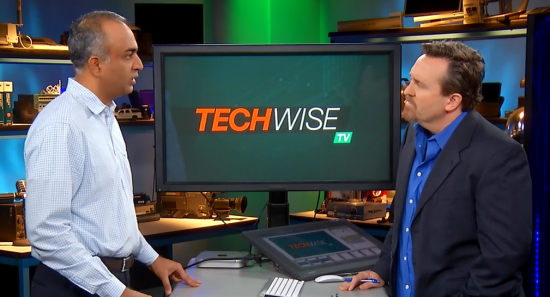If the phrase “multigigabit switching” is not in your personal knowledge base yet, you are not alone – it’s very new. But going forward, you’ll hear a lot about it. Here’s why. Multigigabit switching is an emerging technology that shatters the Ethernet speed barriers found in the LAN infrastructure that most of you have today. It’ll extend the life of your current access LAN for years to come, while helping you get ready for new technology trends that are rapidly approaching.
Instead of being limited to no more than 1 Gbps on a Cat 5e or Cat 6 LAN, which comprises most of existing access LANs, multigigabit switching can support speeds up to 5 Gbps without any required changes to the cabling system. To get a quick idea how useful it is, click the picture below to watch a preview video.
“Why do I need such fast speeds – shouldn’t 1 Gbps be sufficient?” you might ask. Well, the world is moving so fast that new technologies are soon demanding more speed than gigabit. Consider the following use cases:
1. PCs and Macs on high speed Ethernet for rapid data transfer. At Cisco Live Milan last month, several colleagues and I ran an on-site demo that featured Cisco multigigabit switches and PC workstations with Intel NICs running 2.5 Gbps and 5 Gbps. The demo was popular – it constantly drew a large crowd. You can safely expect enterprise class NICs for servers, workstations and storage running 2.5 Gbps and 5 Gbps to hit the market soon.
2. Next generation wireless. The imminent 802.11ac wave 2 release poses both a huge opportunity to deliver high performance mobility, and a major infrastructure challenge in the meantime. The new access points can deliver a speed up to 6.8 Gbps, far exceeding the gigabit speed of a switch port that connects to the AP. Making the entire infrastructure ready, including the access LAN, needs to be on your priority list when you plan for your 802.11ac migration.
“Why stay with Cat 5e or Cat 6? Why not move to Cat 6a, Cat 7 or even fiber?” That might be your next question. The answer here involves multiple considerations. Cost is a big factor. Cat 6a or 7 cables cost more to purchase and to install. As far as fiber, it’s not just the cables. The interfaces and the optical modules will all cost more. Plus, if you use fiber, you cannot use PoE/PoE+/UPOE to power APs and endpoint clients for cost savings. Even if you have a budget, service disruption is another obstacle when it comes to existing buildings. As an example, I learned at a Cisco Live Milan panel discussion that University Hospitals Leuven in Belgium started their Cat 6a cable migration 4 years ago. Today, 75 to 80% of their cable system is still Cat 5e. “We have a highly operational environment,” said Jan Demey, our customer panel speaker. “We cannot ask our doctors to stop their surgeries so that we can pull new cables.”
“So, how does multigigabit switching solve these challenges and what are deployment options?” To answer that, you can get the full details by watching a recent TechWiseTV show dedicated on the topic.
“I am technical. Can I get deeper information on multigigabit switching?” Definitely. There are multiple resources available to get the next level knowledge, including a dedicated new webpage and a white paper. Furthermore, you can sign up for a technical webcast that is specially planed for a technical audience like you with detailed system information. This webcast will take place on Wednesday March 4, 2015:
Technical Overview of New Cisco Catalyst Multigigabit Switches
Are you excited that your current access LAN’s life can be greatly extended and super-charged with multigigabit switching? Before I finish, let me share a couple of comments by industry analysts. They both visited the Cisco multigigabit switching demo at Cisco Live Milan that I mentioned above. Here’re their thoughts:
“Customers care about use cases. Cisco multigigabit switching is a real solution for the 802.11ac wave 2 use case, as well as other emerging use cases where higher network throughput is needed.”
– Brad Casemore, Research Director, IDC
“Customers have two options to deal with their immediate 802.11ac wave 2 challenge: rip out their current cabling infrastructure and replace all of it, or deploy Cisco multigigabit switching. It is just that simple.”
– Zeus Kerravala, Founder and Principal Analyst, ZK Research
Get familiar with multigigabit switching, and find out how much you and your organization can benefit from it!



i think this is a great solution
Thank you for your feedback.
WWE video lol, I like this video so much, simple and informative as well.